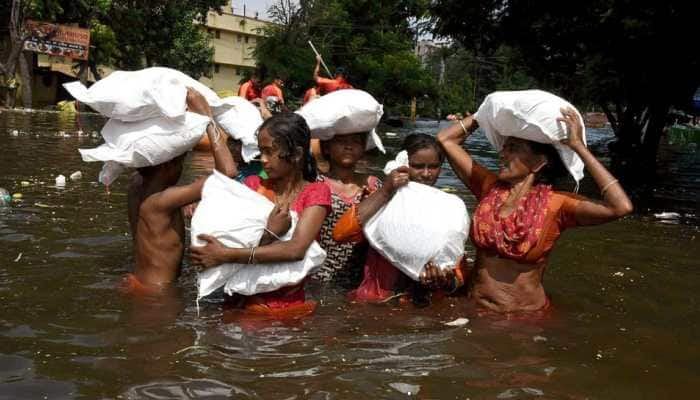India home to most malnourished children in the world: Report
“About 37 percent of our under-five children are underweight, 39 percent are stunted (low height-for-age), 21 percent are wasted (low weight-for-height) and 8 percent are severely acutely malnourished,” said the study.
Trending Photos
) (Representational image)
(Representational image) New Delhi: Despite recent economic progress in India, the fruit of development has failed to secure a better nutritional status among all children of the country.
Growing evidence suggests that there is a socio-economic gradient of childhood malnutrition in India.
As the nation struggles to overcome the evils of hunger that grips many parts of the region, a report has revealed that India harbours the largest number of malnourished children in the world.
Advocating that the country needs to frame policies with a focus on reducing health and social inequities, the joint study by Assocham and EY on Wednesday pointed out that urban India is faced with the challenge of over nutrition.
“Over the decade (2005-15), there has been an overall reduction in the infant mortality rate and under-five mortality rate in India, yet the country is housing about 50 percent of undernourished children of the world,” said the report. It also found that towards the end of 2015, 40 percent of the Indian children were undernourished.
India ranks third on the list of most obese nations after US and China and is also known as the diabetes capital of the world, with about 69.2 million people living with it as per the 2015 data by World Health Organisation, said the report.
“About 37 percent of our under-five children are underweight, 39 percent are stunted (low height-for-age), 21 percent are wasted (low weight-for-height) and 8 percent are severely acutely malnourished,” said the study.
While the percentage of stunted children under five reduced from 48 per cent in 2005-06 to 39 percent in 2015-16, the percentage of children who are wasted increased slightly from 19.8 percent to 21 percent, according to the report.
Moreover, the prevalence of underweight children was higher (38 percent) in rural areas compared to urban cities (29 percent).
“Only about 10 per cent children under the age 6-23 months were reported to receive an adequate diet. This inequality in access is accentuated by the stark state level disparity in nutritional status,” observed the study findings.
In the age bracket of 1-5 years, the prevalence of underweight children ranged from 42 percent in Jharkhand, followed by Bihar, MP and UP with 37 percent, 36 percent and 34.1 percent respectively, to 14.1 percent in Manipur.
“The policies need to focus on reducing health and social inequities and raising educational attainment as well as secured jobs to ensure access to services,” said the report in its recommendations.
India continues to consume non-nutritious, non-balanced food either in the form of under nutrition, over nutrition or micronutrient deficiencies, according to the report.
(With PTI inputs)
Stay informed on all the latest news, real-time breaking news updates, and follow all the important headlines in india news and world News on Zee News.
Live Tv







)
)
)
)
)
)
)
)
)
)
